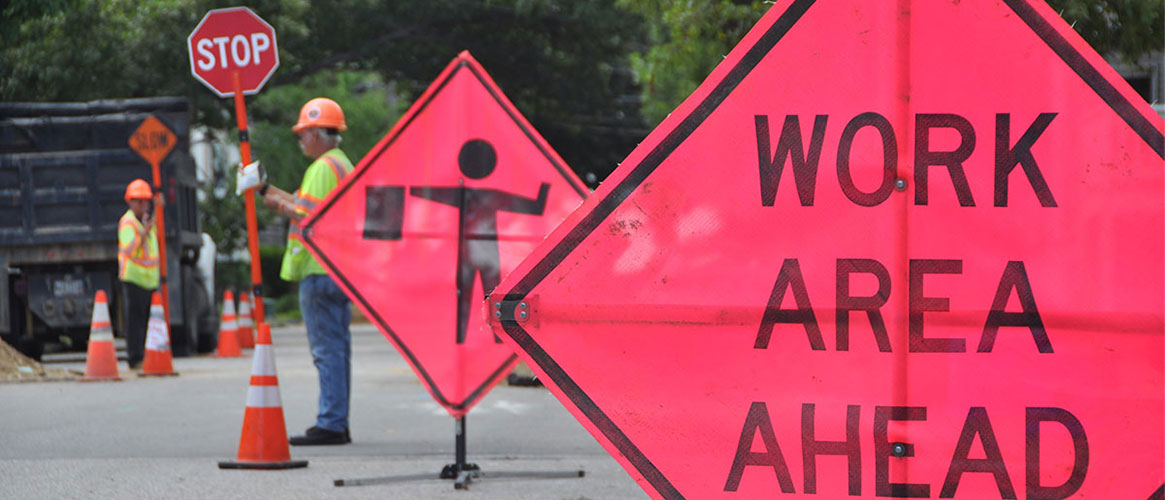Flaggers keep motorists and road workers safe during temporary roadwork by following the safe work practices and training requirements from Cal/OSHA and the Manual of Uniform Traffic Control Devices for Streets and Highways (MUTCD). How can can you insure your workers and your construction equipment are protected while working in these traffic areas?
When are flaggers required?
According to the Construction Safety Orders of the California Code of Regulations, flaggers are required at locations on a construction site where barricades and warning signs cannot control the moving traffic. In these required situations, flaggers must be placed in relation to the equipment or operation so they can give effective warning.
What should a flagger wear?
A flagger must wear warning clothes in specific, highly visible colors. They can wear a vest, jacket, or shirt in colors of orange, strong yellow-green, or fluorescent versions of these. These garments must be worn rain or shine. If it is dark, the flagger should be wearing reflectorized garments, visible from a minimum distance of 1,000 feet. The flagger’s station should be lit so the flagger will be clearly visible to approaching traffic.
What training is required for a flagger?
Before being assigned as a flagger, the individual must be trained in the proper fundamentals of flagging moving traffic. Training, instruction, and signaling directions used by flaggers should conform to the “Manual of Traffic Controls for Construction and Maintenance Work Zones,” published by the State Department of Transportation.
Training should take into account the particular worksite condition and include the following:
- Flagger equipment which must be used.
- The layout of the work zone and flagging station.
- Methods to signal traffic to stop, proceed, or slow down.
- Methods of one-way control.
- Trainee demonstration of proper flagging methods.
- How to respond to emergency vehicles traveling through the work zone.
- How to handle emergency situations.
- Methods of dealing with hostile drivers.
- Flagging procedures when only a single flagger is used.
Flaggers must be trained by someone with the qualifications and experience necessary to effectively instruct the employee in the proper fundamentals of flagging moving traffic. And, as with all employee training, it should be documented and kept on file in accordance with the company Injury and Illness Prevention Program (IIPP).
